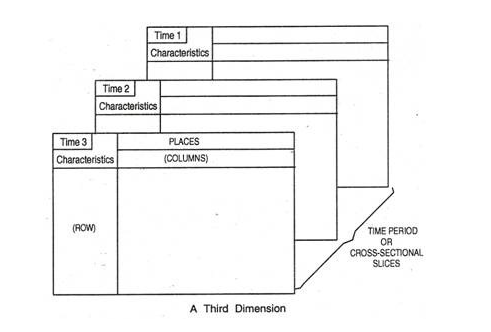Hartshorne asserted that geography can benefit from both regional approach and systemic approach. Thus, he advocated the development of regional synthesis approach. Where regional studies should be based upon systematic studies.
Brian J.L Berry has endeavoured to explain regional synthesis by using a geographic matrix, in which the traditional dichotomies (human geography and physical geography) are included as references. The geographic matrix highlights “the unity of the spatial viewpoint”.
It is assumed by Berry that complete ‘geographic data files’ are available so that data can be arranged in a rectangular array or matrix. The intersection of any row and column has been designated as cell.
Each cell is identified with a geographic fact. The geographic characteristic coincides with the row while the place under study coincides with the column.
Berry has explained regional synthesis with the help of a whole series of geographic matrices presented in their correct temporal sequence.

Row-wise groups of variables coincide with the systematic or topical branches of geography and regions are represented by groups of columns. The cell represents the synthesis of the both systematic and regional geography.
The geographical matrix study enables us to study the spatial co-variations or spatial associations. The comparison of two columns in the matrix helps us to study the areal differentiation in its holistic sense.
The time dimension of the regional synthesis helps to analyse the spatial variations of geographical features over periods. Example – World fertility rate from 1971 to 2011. And changing spatial associations.
